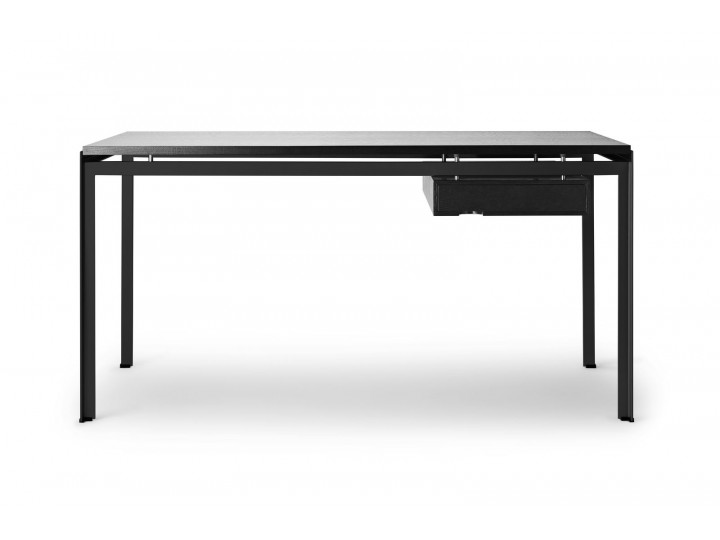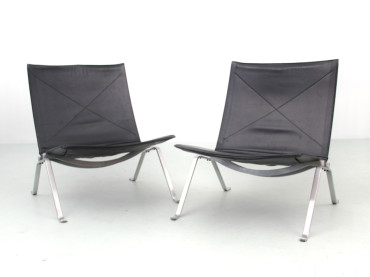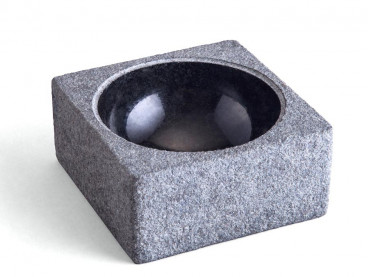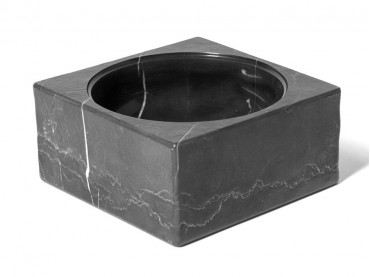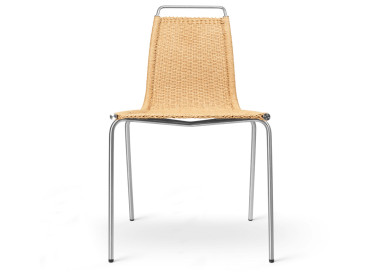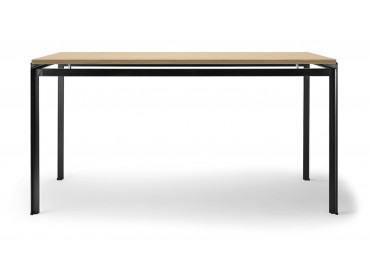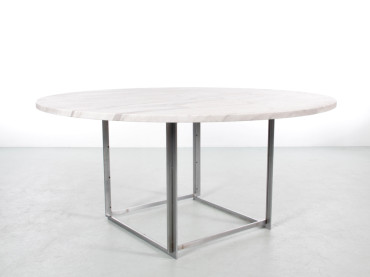Mid-Century modern scandinavian desk model PK52A "Student desk"" by Poul Kjærholm..
-
Poul Kjearholm
-
Carl Hansen & Søn
- CH086 On demand. Delivery time 8-10 weeks
Mid-Century modern scandinavian desk model PK52A "Student desk"" by Poul Kjærholm.. *Required step
In order to help you to choose, and to receive samples, do not hesitate to contact us by email: contact@galerie-mobler.com or by phone: 01 43 33 20 12
The PK52A Student Desk was designed by Poul Kjærholm for the Royal Danish Academy of Fine Arts, while he was a member of the academic staff. The cleverly constructed table highlights Kjærholm’s signature ability to unite traditional craftsmanship and industrial design. The simple shape embodies the lightness and geometric elegance that Kjærholm became renowned for – his pioneering role in designs such as the PK52A Student Desk also helped place Danish design on the world map. The PK52A is available in a larger version as the PK52 Professor Desk. Both desks can effortlessly serve as dining tables as their tabletops are reversible, making it possible to use each side for its own purpose. The tables also have an optional drawer as a beautiful storage solution. Legs in black or gray lacquered steel.
Without the module with drawer, the top is reversible: black on one side and gray on the other. With a drawer the top is mounted with black side visible. The edges are in wood painted black.
| Year | 1955 |
| Dimensions | H : 72 cm. L : 141,5 cm. D : 85 cm. |
| Material | Plywood, oak . Base: black steel. |
| Style | Classique Neuf |
| Origin | Denmark |
| Fournisseur | Carl Hansen & Søn |
Poul Kjearholm
Denmark (1929-1980)
Architect Poul Kjærholm finished his training as a cabinetmaker in 1949 and continued his education at the Danish School of Arts and Crafts’ Furniture School, graduating in 1952. At the same time he sat in on lectures at The Royal Danish Academy of Fine Arts’ School of Architecture. He first taught at The Danish School of Arts and Crafts and then at The Royal Danish Academy of Fine Arts’ School of Architecture, where he took over Ole
Wanscher’s professorate in 1976. Poul Kjærholm was inspired by the international functionalism and its minimalist steel tube furniture, but he did not imitate it. He elaborated on it and developed it until he had created independent furniture in a personal style. The starting point was the particular qualities of the steel; the aim was that the shape of the object should reflect the material it was made from.
This started with Kjærholm’s final examination project from The Danish School of Arts and Crafts, the Flagline chair (PK25), where each side consists of a piece of sliced spring steel, which has been bent to form both legs and armrests. A few years later he had re-designed PK25 and created a new recliner (PK22) consisting of a few steel components, which had been joined with Allen screws (RP00219). This made it easier to create clear and readable constructions, where even the joints with Allen screws were used decoratively. The steel was matt polished to avoid reflections from the light. PK22 was the first chair in a series of steel tube furniture based on the same construction scheme. A good example is the classically beautiful armchair PK11, the serene Tulip chair PK9 (RP00221) and the elegant lounger PK24 (RP00224). It was not just the furniture that had to be beautiful, the individual parts had to be so too. Kjærholm demonstrated this by joining several identical construction elements together into large sculptures at his exhibitions. Kjærholm also experimented with wood furniture and created the pivotal shell chair of moulded veneer PK0 (RP01481) and the armchair PK15 made from steambent wood.
With his sculptural steel furniture, Poul Kjærholm created his own style of furniture characterized by simple and serene constructions, which also functioned on the purely aesthetic level. One might say that Poul Kjærholm was a pioneer of steel furniture in the same way as Hans J. Wegner was a pioneer of wooden furniture.

